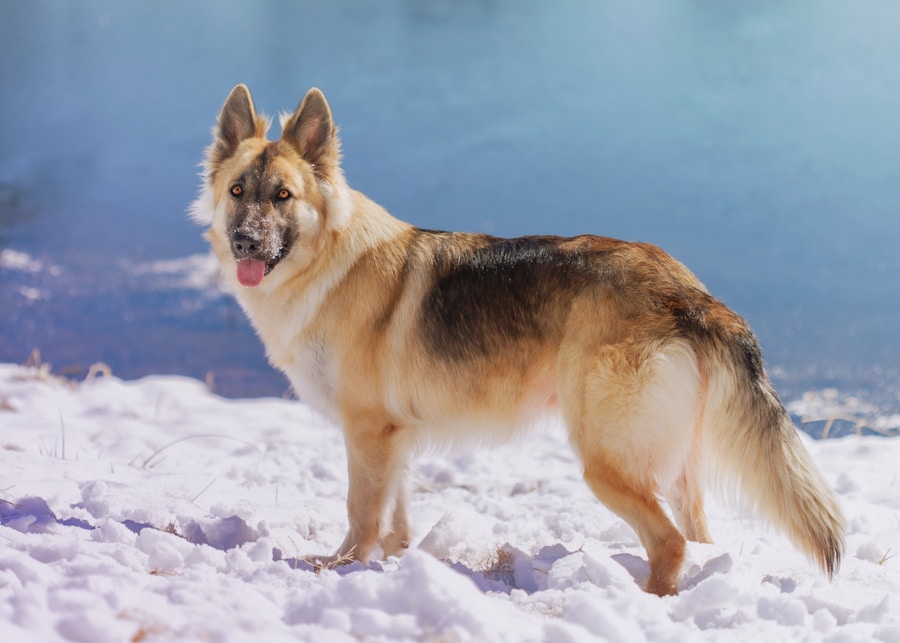The German Shepherd breed has a rich and storied history that dates back to the late 19th century in Germany. The breed was developed primarily by Captain Max von Stephanitz, who sought to create a versatile herding dog that could also serve various roles in society. In 1899, von Stephanitz attended a dog show where he encountered a dog named Hektor Linksrhein, which he believed embodied the qualities he was looking for.
He purchased the dog and subsequently renamed him Horand von Grafrath, who became the first registered German Shepherd. This marked the official beginning of the breed, as von Stephanitz established the Verein für Deutsche Schäferhunde (Society for the German Shepherd Dog) to promote and standardize the breed. The early German Shepherds were primarily bred for their herding abilities, intelligence, and trainability.
They were utilized by farmers to manage livestock, particularly sheep, in the hilly terrains of Germany. However, as the breed gained popularity, its versatility became apparent. During World War I, German Shepherds were employed by the military for various roles, including messenger dogs, sentries, and search-and-rescue operations.
Their exceptional sense of smell and keen intelligence made them invaluable assets on the battlefield. After the war, the breed’s reputation spread internationally, leading to its establishment as one of the most popular dog breeds worldwide.
Key Takeaways
- The German Shepherd breed was developed in the late 19th century in Germany by Captain Max von Stephanitz.
- German Shepherds are known for their strong, agile bodies and intelligent, confident, and loyal temperament.
- Training and regular exercise are essential for German Shepherds to keep them mentally and physically stimulated.
- German Shepherds are widely used as police, military, and search and rescue dogs due to their intelligence and versatility.
- When properly trained and socialized, German Shepherds can make excellent family pets, being protective and loving towards their owners.
Physical Characteristics and Temperament
Physical Characteristics
Their bodies are well-proportioned, with a strong back and a deep chest that allows for powerful movement. The breed’s coat is dense and double-layered, providing protection against various weather conditions. Common colors include black and tan, sable, and all-black variations. Their ears are erect and pointed, contributing to their alert expression.
Temperament and Intelligence
In terms of temperament, German Shepherds are renowned for their intelligence and loyalty. They are highly trainable and eager to please, making them excellent candidates for various roles, from working dogs to family pets. Their protective instincts are strong; they are naturally wary of strangers but are affectionate and devoted to their families.
Training and Socialization
This combination of traits makes them both reliable companions and effective guardians. However, their intelligence can also lead to boredom if not adequately stimulated, which may result in undesirable behaviors if they do not receive proper training and socialization.
Training and Exercise Needs

Training a German Shepherd requires consistency, patience, and positive reinforcement techniques. Due to their high intelligence, they thrive in environments where they can learn new commands and skills quickly. Early socialization is crucial; exposing them to different people, environments, and other animals helps them develop into well-rounded adults.
Puppy classes are an excellent way to start this process, allowing young dogs to interact with their peers while learning basic obedience commands. Exercise is another critical component of a German Shepherd’s well-being. These dogs are energetic and require regular physical activity to maintain their health and happiness.
Daily walks, play sessions, and mental stimulation through puzzle toys or training exercises are essential for keeping them engaged. A lack of exercise can lead to behavioral issues such as excessive barking or destructive chewing. Many owners find that incorporating activities like agility training or obedience competitions not only provides physical exercise but also strengthens the bond between dog and owner.
The German Shepherd as a Working Dog
| Characteristic | Measurement |
|---|---|
| Height | Male: 24-26 inches, Female: 22-24 inches |
| Weight | Male: 65-90 pounds, Female: 50-70 pounds |
| Life Expectancy | 9-13 years |
| Intelligence | Ranked 3rd in Stanley Coren’s The Intelligence of Dogs |
| Working Roles | Police, Military, Search and Rescue, Service Dogs |
| Trainability | Highly trainable and eager to learn |
The versatility of the German Shepherd has made it one of the most sought-after working breeds in various fields. Their intelligence and trainability have led to their use in police work, search-and-rescue operations, military service, and even therapy roles. In law enforcement, German Shepherds are often trained in scent detection for narcotics or explosives, as well as apprehension techniques for tracking down suspects.
Their keen sense of smell is estimated to be between 10,000 to 100,000 times more sensitive than that of humans, making them invaluable in these roles. In addition to their work in law enforcement, German Shepherds excel in search-and-rescue missions due to their ability to navigate challenging terrains and locate missing persons. Their strong drive to work alongside humans makes them ideal candidates for therapy dogs as well; they can provide comfort and support in hospitals or schools.
The breed’s adaptability allows them to transition seamlessly between various roles while maintaining their core characteristics of loyalty and intelligence.
The German Shepherd as a Family Pet
While German Shepherds are often recognized for their working capabilities, they also make excellent family pets when properly trained and socialized. Their protective nature ensures that they will guard their families fiercely while also being gentle with children. Many families appreciate the breed’s loyalty and companionship; German Shepherds often form strong bonds with all family members.
Their playful demeanor makes them great playmates for kids, as they enjoy engaging in games like fetch or tug-of-war. However, potential owners should be aware that owning a German Shepherd comes with responsibilities. These dogs thrive in active households where they can participate in family activities.
They require regular exercise and mental stimulation to prevent boredom-related behaviors. Families considering a German Shepherd should also prioritize training from an early age to ensure that they develop into well-mannered companions. With proper care and attention, a German Shepherd can become an integral part of the family dynamic.
Health Concerns and Care

Like all breeds, German Shepherds are prone to certain health issues that prospective owners should be aware of. One of the most common concerns is hip dysplasia, a genetic condition where the hip joint does not fit properly into the hip socket. This can lead to arthritis and pain over time.
Regular veterinary check-ups and maintaining a healthy weight can help mitigate some risks associated with this condition. Additionally, responsible breeding practices can reduce the likelihood of genetic disorders being passed down. Another health concern is degenerative myelopathy (DM), a progressive disease affecting the spinal cord that can lead to mobility issues in older dogs.
While there is no cure for DM, early diagnosis can help owners manage symptoms effectively through physical therapy or mobility aids. Regular exercise is crucial for maintaining overall health; however, it should be balanced with rest periods to avoid overexertion. A nutritious diet tailored to their age and activity level is also essential for keeping German Shepherds healthy throughout their lives.
Famous German Shepherds
Throughout history, several German Shepherds have gained fame for their remarkable contributions or unique stories. One of the most notable is Rin Tin Tin, a dog rescued from a World War I battlefield by an American soldier named Lee Duncan. Rin Tin Tin went on to become a Hollywood star in the 1920s and 1930s, appearing in numerous films that showcased his intelligence and agility.
His popularity helped elevate the breed’s status in America and contributed significantly to its growth in popularity. Another famous German Shepherd is Strongheart, who was one of the first canine movie stars in silent films during the 1920s. His success paved the way for future canine actors and further solidified the breed’s reputation as intelligent and trainable companions.
In more recent times, police dogs like Max from the television series “CSI: NY” have brought attention to the breed’s working capabilities while endearing them to audiences worldwide.
The German Shepherd’s Enduring Popularity
The enduring popularity of the German Shepherd can be attributed to its remarkable versatility as both a working dog and a family companion. Their intelligence, loyalty, and protective instincts make them ideal candidates for various roles in society while also allowing them to thrive in home environments filled with love and activity. As families continue to seek out dogs that can adapt to their lifestyles while providing companionship and security, the German Shepherd remains a top choice among dog enthusiasts.
Moreover, ongoing advancements in training techniques and responsible breeding practices have contributed to maintaining the breed’s health and temperament over generations. As more people become aware of the importance of socialization and training from an early age, the potential for German Shepherds to excel as both working dogs and beloved pets continues to grow. This combination of traits ensures that the German Shepherd will remain a cherished breed for years to come.












